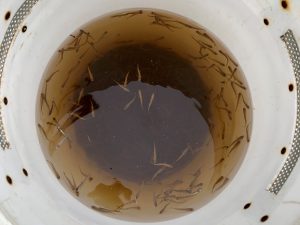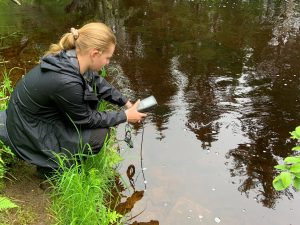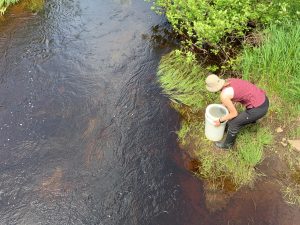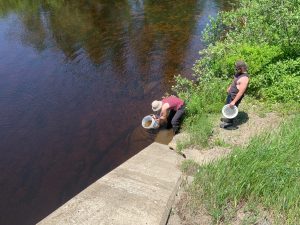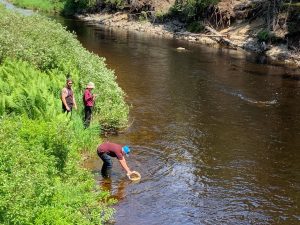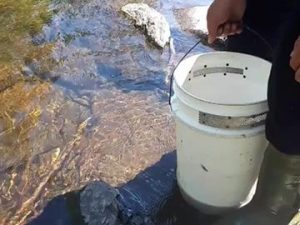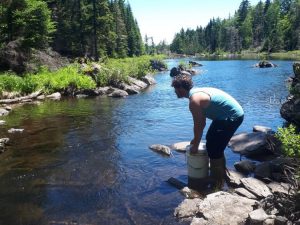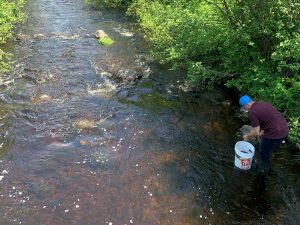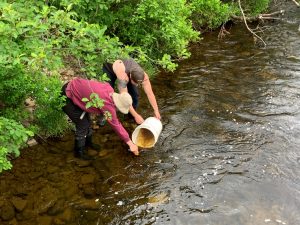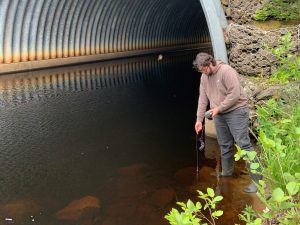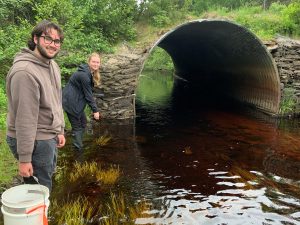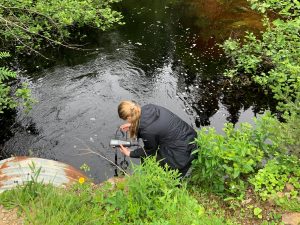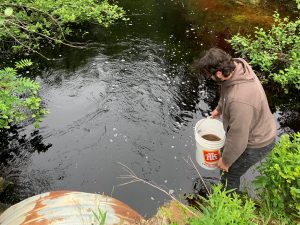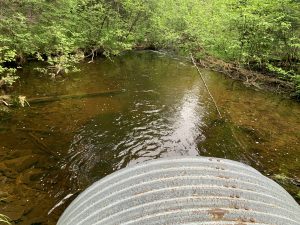In the fall, some areas of the Miramichi River may not be accessible to the wild adult salmon that typically spawn there. This can be due to low water levels or impediments such as beaver dams. As well, survivability may be especially low in parts of the river due to reasons like competition for resources. Stocking programs can help boost salmon populations by adding juvenile fish to these low-density areas of the river.
Fry stocking on the Miramichi River has been happening for over 150 years. During its early years, the Miramichi Fish Hatchery, now known as the Miramichi Salmon Conservation Centre, would purchase live adult Atlantic salmon from commercial trapnet fisherman to use as broodstock for spawning and fry-stocking. Without motorized vehicles, fish had to be transported in tanks of water by horse and wagon, boat, or train. Since 2004, the MSA has stocked over 3.8 million salmon fry in the Miramichi River – over 1.4 million on the Northwest branch and over 2.4 million on the Southwest branch. These fry have been distributed to over 950 sites in the Miramichi watershed - 300+ sites on the Northwest and 600+ sites on the Southwest.
Salmon are collected from the Miramichi River and kept at the hatchery until they are ready to spawn. After spawning, the live fish are released back to the river. The fertilized eggs are kept in incubation all winter until the fry hatch the following spring. These fry are then stocked back into the waterways their parents came from (natal streams). In the wild, less than 30% of eggs hatch and survive to become fry, but in the hatchery we can increase this rate of survival to 80-90% thanks to continuous monitoring and good husbandry practices. The eggs experience no predation or gouging ice flows that may kill the wild redds (piles of eggs buried in the gravel after spawning).
The number of fry to be stocked is estimated by calculating the group's weight. Estimating the number of fry to be stocked helps us manage fry densities when transporting them and stocking them in their natal water, ensuring we maximize their survival. When the fry are ready to leave the hatchery and return to the river, they are placed in oxygenated water tanks on the back of trucks. The MSA staff then use buckets to carry the fry to the river for release. Later, these release sites are surveyed via electrofishing to gauge the success of stocking activities.
Traditional fry stocking techniques involve spawning adult broodstock salmon, however the MSA also carries out DFO-approved research studies on novel fry stocking strategies to determine the best stocking strategies for our watershed. Annual and long-term studies on stocking strategies are valuable to river conservation world-wide.

